
The Trent–Severn Waterway is a 386-kilometre-long (240 mi) canal route connecting Lake Ontario at Trenton to Georgian Bay, Lake Huron, at Port Severn. Its major natural waterways include the Trent River, Otonabee River, Kawartha Lakes, Lake Simcoe, Lake Couchiching and Severn River. Its scenic, meandering route has been called "one of the finest interconnected systems of navigation in the world".
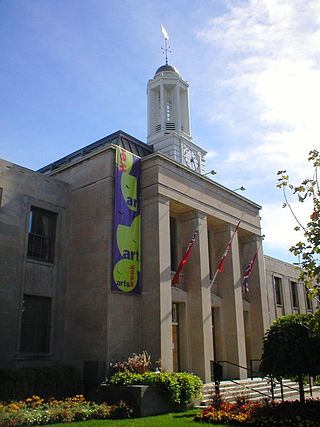
Peterborough is a city on the Otonabee River in Ontario, Canada, about 125 kilometres northeast of Toronto. According to the 2021 Census, the population of the City of Peterborough was 83,651. The population of the Peterborough Census Metropolitan Area (CMA), which includes the surrounding Townships of Selwyn, Cavan Monaghan, Otonabee-South Monaghan, and Douro-Dummer, was 128,624 in 2021. In 2021, Peterborough ranked 32nd among the country's 41 census metropolitan areas according to the CMA in Canada. The current mayor of Peterborough is Jeff Leal.

Cobourg is a town in the Canadian province of Ontario, located in Southern Ontario 95 km (59 mi) east of Toronto and 62 km (39 mi) east of Oshawa. It is the largest town in and seat of Northumberland County. Its nearest neighbour is Port Hope, 7 km (4 mi) to the west. It is located along Highway 401 and the former Highway 2. To the south, Cobourg borders Lake Ontario. To the north, east and west, it is surrounded by Hamilton Township.

The Golden Horseshoe is a secondary region of Southern Ontario, Canada, which lies at the western end of Lake Ontario, with outer boundaries stretching south to Lake Erie and north to Lake Scugog, Lake Simcoe and Georgian Bay of Lake Huron. The region is the most densely populated and industrialized in Canada. Based on the 2021 census, with a population of 7,759,635 people in its core and 9,765,188 in its greater area, the Golden Horseshoe accounts for over 20 percent of the population of Canada and more than 54 percent of Ontario's population. It is part of the Quebec City–Windsor Corridor, itself part of the Great Lakes megalopolis.
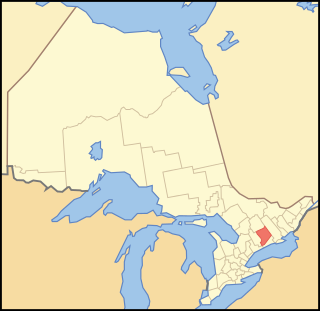
Peterborough County is located in Southern Ontario, Canada. The county seat is The City of Peterborough, which is independent of the county.

Mount Hope Cemetery is a municipal cemetery in Rochester, New York, founded in 1838. It is the burial site of Susan B. Anthony and Frederick Douglass. Situated on 196 acres (79 ha) of land adjacent to the University of Rochester on Mount Hope Avenue, the cemetery is the permanent resting place of over 350,000 people. The annual growth rate of this cemetery is 500–600 burials per year.

The City of Kawartha Lakes is a unitary municipality in Central Ontario, Canada. It is a municipality legally structured as a single-tier city; however, Kawartha Lakes is the size of a typical Ontario county and is mostly rural. It is the second largest single-tier municipality in Ontario by land area.
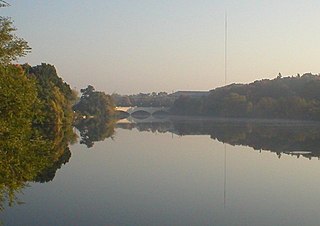
The Otonabee River is a river in Peterborough County in Central Ontario, Canada. The river flows from Katchewanooka Lake, at the north end of the community of Lakefield, through the city of Peterborough to Rice Lake. It is in the Great Lakes Basin and forms part of the Trent-Severn Waterway.
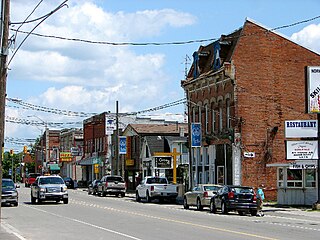
Asphodel–Norwood is a lower tier township municipality in Peterborough County in Central Ontario, Canada, with a 2021 population of 4,658. The land on which the township is situated is the traditional territory of the Mississauga, and became open to European colonization following its survey in 1820. The site that would become Norwood was settled in 1823, and it was incorporated as a village in 1878. The township, in its current form, was created in 1998 by the reunification of the village of Norwood with the surrounding township of Asphodel.

Cataraqui Cemetery is a non-denominational cemetery located in Kingston, Ontario, Canada. Founded in 1850, it predates Canadian Confederation, and continues as an active burial ground. The cemetery is 91 acres in a rural setting with rolling wooded terrain, ponds and watercourses. More than 46,000 individuals are interred within the grounds, and it is the final resting place of many prominent Canadians, including the burial site of Canada's first prime minister, John A. Macdonald. The Macdonald family gravesite, and the cemetery itself, are both designated as National Historic Sites of Canada.

The Township of Alnwick/Haldimand is a township in central Ontario, Canada, in Northumberland County, situated between Lake Ontario and Rice Lake. It was formed in 2001 by the merger of Alnwick Township in the north and Haldimand Township in the south. Alderville First Nation is an autonomously governed First Nation contained within the township boundaries, in two non-contiguous sections along County Roads 45 and 18.

Toronto Necropolis is a non-denominational cemetery in Toronto, Ontario, Canada. It is located on the west side of the Don River valley, to the north of Riverdale Farm in the Cabbagetown neighbourhood.

The Diocese of Hamilton is a Latin Church ecclesiastical territory or diocese of the Catholic Church in Canada. It is a suffragan diocese in the ecclesiastical province of the metropolitan Archdiocese in Toronto.

The Township of Mariposa was a municipality located in the southwest corner of the former Victoria County, now the city of Kawartha Lakes, in the Canadian province of Ontario. The other municipal neighbours of Mariposa are Ops and Fenelon on the east, Eldon on the north, Brock on the west, and Scugog on the south, with the latter two located in the Durham Regional Municipality. The former township includes the communities of Little Britain, Manilla, Mariposa, Valentia, and Oakwood. Today, most of the former township is represented in the City of Kawartha Lakes by the Ward 8 Councillor, John Pollard, and Ward 4 Councillor Andrew Veale.

John Bertram was a businessman and a Member of Parliament in Canada.
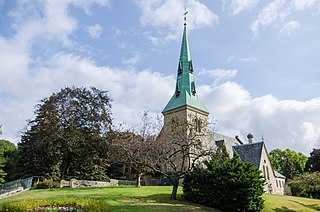
St. James' Cemetery is a historic cemetery in Toronto, Ontario, Canada. It is the oldest cemetery in Toronto that is still in use, having opened in 1844. It was originally the burial ground for the Cathedral Church of St. James, but it later became non-denominational. The main entrance to the cemetery is located at 635 Parliament Street, north of Wellesley Street East. Just to the west is the St. James Town neighbourhood, which is named after the cemetery.

Little Lake is a small lake on the Otonabee River in the city of Peterborough, Ontario, Canada. The lake is in the downtown of the city and is used for fishing, swimming, boating, and for various special events. The lake lies on the water route from Lake Ontario to the Kawartha Lakes. The area around the lake was first settled by Europeans around the start of the 19th century. Steam- and water-powered saw mills were built on the lake and on the river upstream to prepare lumber for shipment overseas. Sawdust and other debris from the mills polluted the lake, killed the fish and clogged up the navigable channels. The smell was so noxious it drove residents near the lake to move. These problems were resolved by the end of the century, when the lake became a hub on the new Trent-Severn Waterway from Lake Ontario to Lake Huron. However, industries attracted by cheap hydroelectric power, such as General Electric used the lake for disposal of industrial chemicals for many years. The pollutants seems to be mostly contained in the sediment, and the lake is now considered safe for recreational use.

Peterborough City Hall is the seat of the municipal government of Peterborough, Ontario, Canada. It is a 2+1⁄2-storey building, located at 500 George Street North, across the street from Confederation Park, the Drill Hall and Armouries and Peterborough Collegiate. The complex consists of two buildings: the City Hall built in 1951 and the former Carnegie Library built in 1911.
John Edward Belcher was an Irish-born Canadian civil engineer and architect. He is most known for his work in Peterborough, Ontario, where he designed many churches, residences and civic buildings which are now local landmarks. Belcher served as president of the Ontario Association of Architects in 1899.
Lansdowne Place is a shopping mall located in Peterborough, Ontario, Canada. Opened in 1980, the mall has over 105 stores and services. It is located at 645 Lansdowne Street West in the city's south end.


















